Tokens of Love and Gratitude to Christ | Part 9
Originally posted on www.camelbackbible.com
From Artistry to Depravity
If Krakow exudes the glories of human artistry, then a complex of barracks 60 kilometers to the southwest exemplifies the depths of human depravity.
In a small town called Oswiecim, renamed by Germans Auschwitz, the greatest mass murder of human history took place. This is where 1.1 million human beings, 1,200 souls at a time, were herded into air-sealed ‘gas chambers’. Lethal doses of hydrogen cyanide (Zyclon B) were dropped from vents in the ceiling, causing respiratory failure within two minutes.
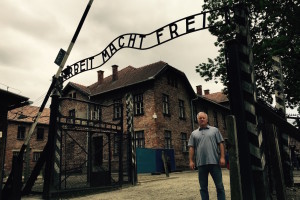
ABEIT MACHT FREI, which means ‘Work is Liberating’
None of us wanted to visit Auschwitz. We talked about it – Lesli, Jon and I – and agreed it would be unendurable. We also agreed it was unavoidable. For two reasons: 1) It is important to reckon with the worst of human behavior in order to seek out a solution; and 2) It is essential to honor human life by commemorating those whose lost their lives so viciously, painfully, and needlessly.
The soiled earth of Auschwitz is holy ground. No one needs to be told. Even as we approached the infamous camp, while we were yet a hundred yards away, we were moved along by an eerie silence, by scores of people shuffling noiselessly to the killing grounds.
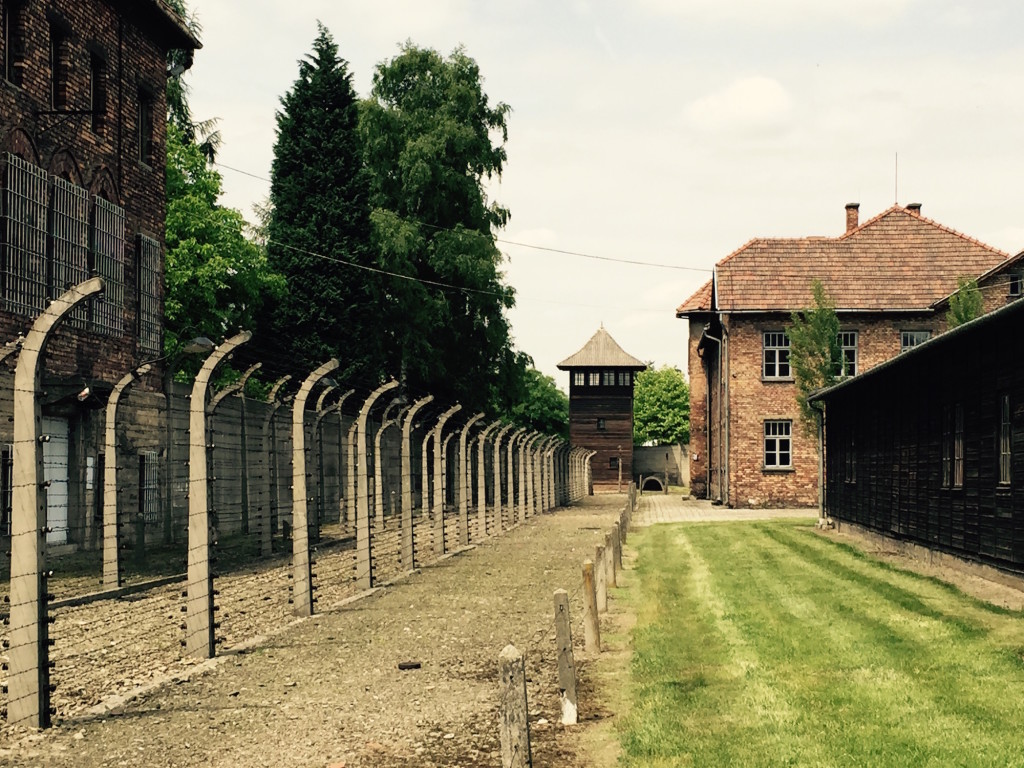
At the entrance – where seventy years ago a ramshackle Jewish orchestra played upbeat music to settle the wary nerves of those subjected to a long train journey packed like cattle into box cars – unsuspecting inmates would be marched under the welcome sign, still standing today, ABEIT MACHT FREI, which means ‘Work is Liberating’ – a sardonic message for those who would neither work nor be free. Only a handful of arrivals, the most robust, would be spared for work details: the rest were sorted by gender, separated from loved ones, stripped naked, shorn of hair, and pushed towards the ‘showers’ with the vents in the ceiling.
Three moments – as we walked through barracks, past execution walls (where rebellious prisoners were summarily shot), within gas chambers and next to crematoria, the gravel crunching beneath our feet the only audible sound – proved especially poignant.
The first was – at the top of the stairs of the third barrack and without warning – facing a sea of human hair, an endless expanse of human hair, piled two feet deep, ten feet wide, in glass cases stretching the full length of the barrack, perhaps fifty yards long. Clearly discernable within the masses of hair were individual clumps, each with its unique consistency and color, the only remaining evidence of a man, woman, or child. The exposure to a trillion or so thread-like strands stolen from the heads of unsuspecting human beings was almost too awful to bear. Many tourists could only briefly glimpse the spectacle, gasp audibly, stumble over their feet, and return to the stairs, with clenched fists and eyes filling with tears.
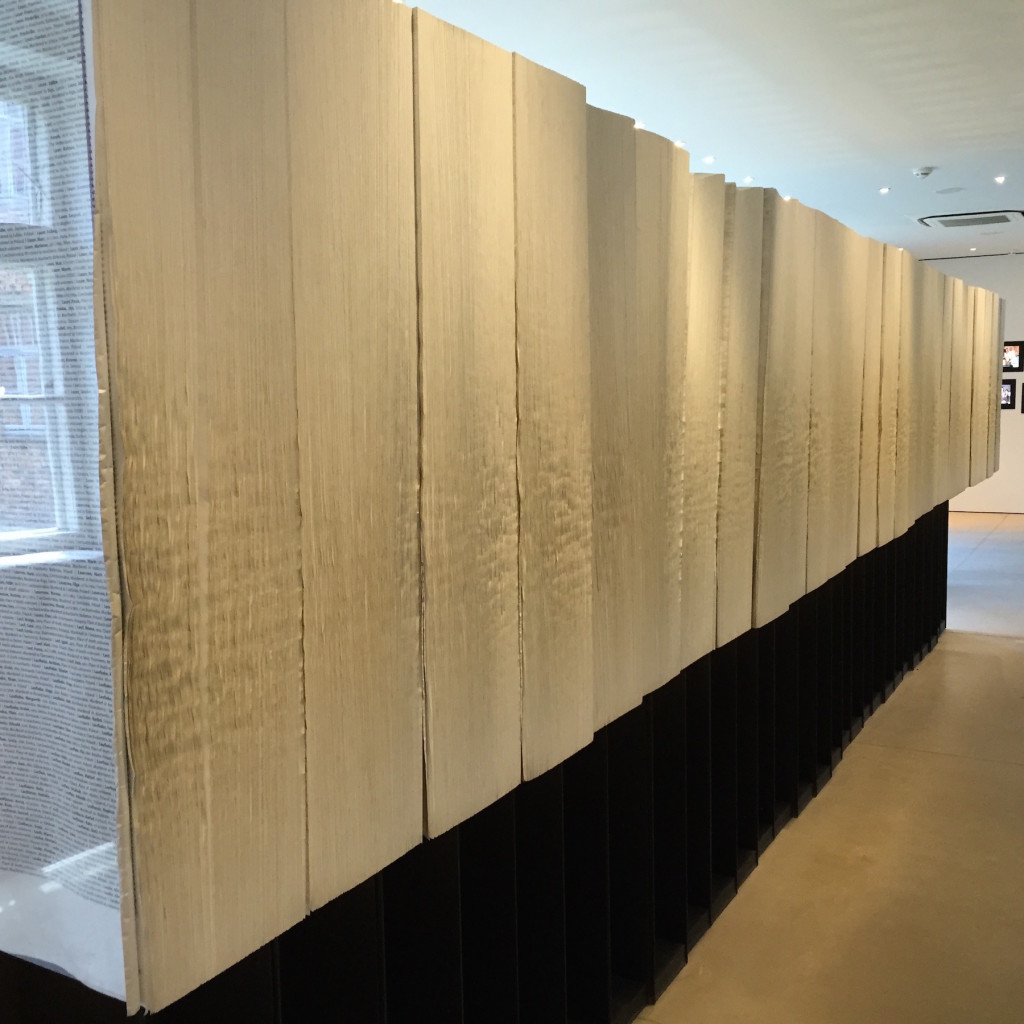
One half of the Book of Names, containing names of the 4 million known Jews to die in death camps in World War II
The second moment took place in the barrack which the state of Israel has turned into a shrine. In one corridor appeared the largest book I’ve ever seen. The pages were at least five feet tall and three feet wide. Each page was attached to one of two metal rods, which ran back to back the entire length of the room and effectively comprised two fifty-foot long ‘books’.
Inserting my finger randomly between two of the very large pages and pulling the book open at that point, I discovered a sheet of paper filled with a thousand tiny names, next to each of which appeared a date and place of birth, as well as a date of death – but no place of death. It was unnecessary.
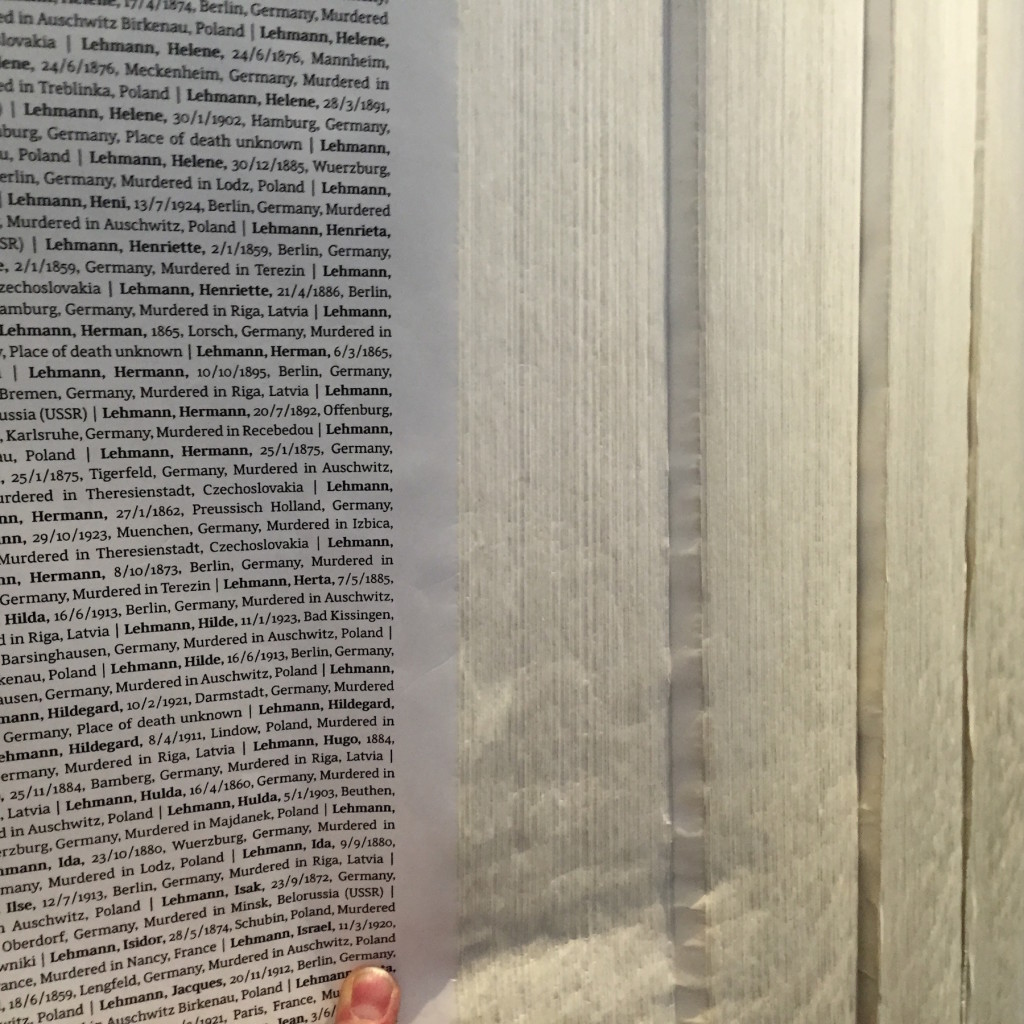
One page in the Book of Names
Every one of the more than four million Jewish names in this ‘Book of Names’ met a premature demise in one of the death camps of World War II, no less than a million of whom breathed their last on the earth beneath my feet, at Auschwitz.
The final moment came when I looked out an upstairs window onto a small lagoon used to supply water for the camp. There, leaning on a fence post, with head in hands, obviously suffering a moment of profound anguish, was a man in his early twenties with a cape draped over his shoulders.
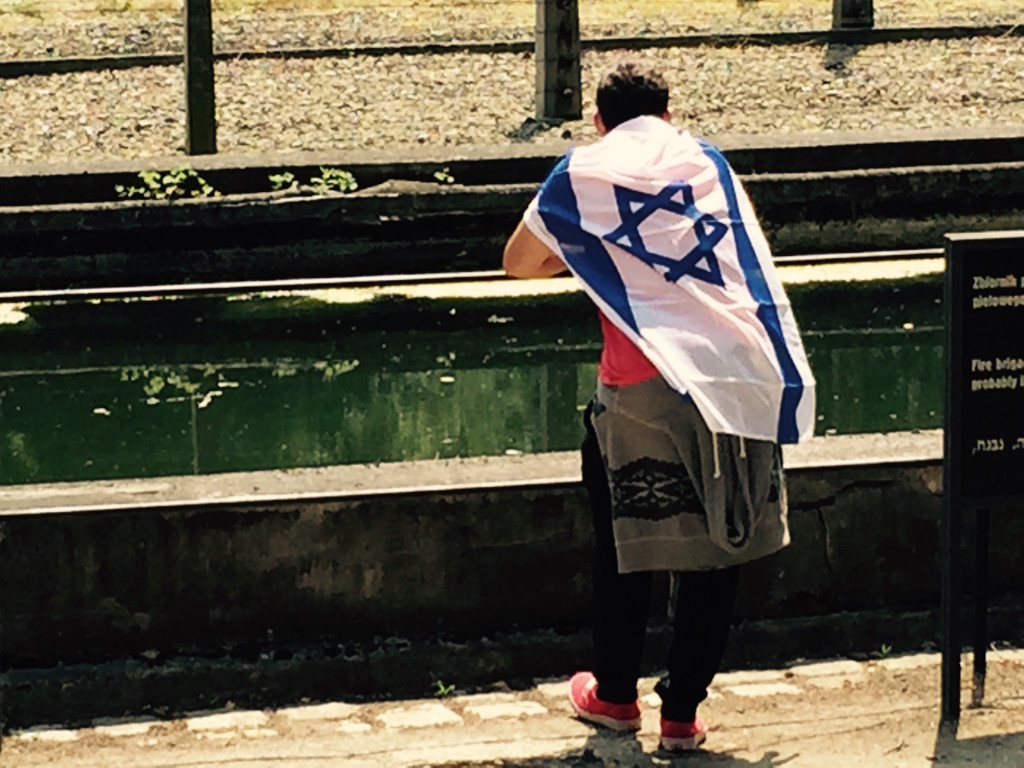
The soiled earth of Auschwitz is holy ground
The cape was bright white, except for a blue six-pointed star in the middle. It was the flag of Israel.
One of the many inscriptions dotting the grounds of Auschwitz condemned the Holocaust as a tragedy marked by ‘inhumanity’. Thinking for a moment, I concluded the inscription was misleading. What happened at Auschwitz was, sadly, not inhuman, but actually very human. It was the work of humanity corrupted by sin. It was evidence of the work of the ‘selfish gene’ residing at the core of all human beings. It was an exhibition of human ‘nature red in tooth and claw’.
This is – remarkably – a positive insight. It is not until we acknowledge the flaw inherent to our humanity that we are prepared to seek a super-human solution. It is not until we admit our sin that we look for a savior.
At Auschwitz, more profoundly than ever before, I saw our need for Jesus. The one who died on a cross to put an end to our sin, the one who rose from the dead to instill newness of life – it is he, he alone, we need. Jesus died to the sin of humanity, indeed to the sin of Auschwitz, in order to create something so much better: life as full as it is long, life imbued with all the fullness of God.
Through the tears and the agonies and the deaths of Auschwitz, we can see more clearly the solution to Auschwitz, the only solution, the final solution.
Jesus Christ!
Blessings in Christ,
Tim
Read more posts in the series:
- Tokens of Love and Gratitude to Christ | Part 1
- Tokens of Love | Part 2: History of Poland
- Tokens of Love | Part 3: Through Our Suffering, God Can Work Mightily
- Tokens of Love | Part 4: Freedom in Jesus Christ
- Tokens of Love | Part 5: Poland’s Favorite Sons
- Tokens of Love | Part 6: Peace and Freedom
- Tokens of Love | Part 7: Assurance of Eternal Life
- Tokens of Love | Part 8: Exploring Krakow
- Tokens of Love | Part 10: The World Slowly Being Transformed into a Wilderness
- Tokens of Love | Part 11: New Life in Christ
- Tokens of Love | Part 12: Reaching Gypsies
- Tokens of Love | Part 13: Grieving the Empty Seats
- Tokens of Love | Part 14: The Greatest Work of All
- Tokens of Love | Part 15: The Kingdom Plans of the Lord
- Tokens of Love | Part 16: Until We Dance at the Foot of God’s Throne
- Tokens of Love | Part 17: Fullness of Life

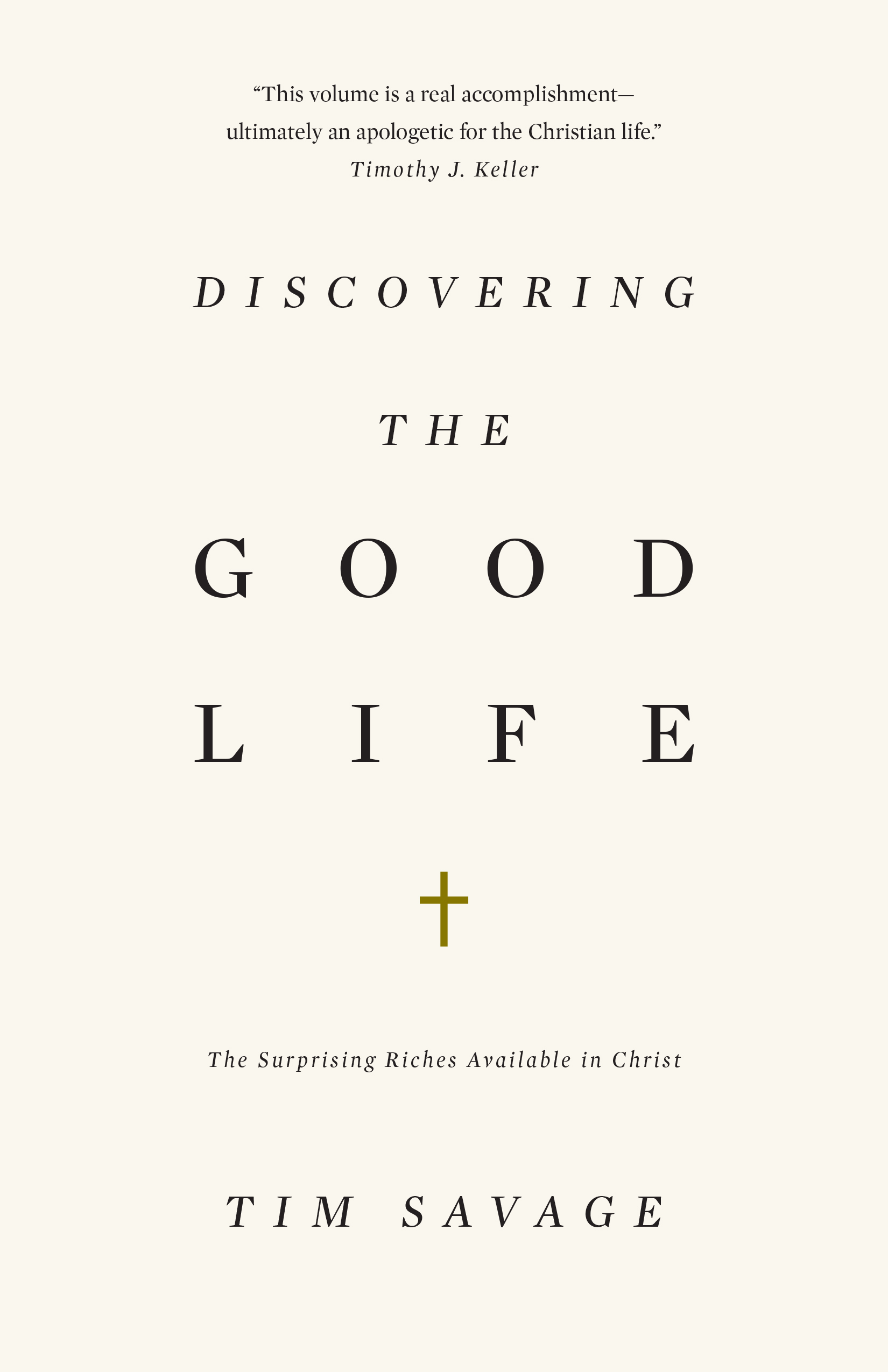
One response to “Tokens of Love and Gratitude to Christ | Part 9”
Add your voice to the conversation: